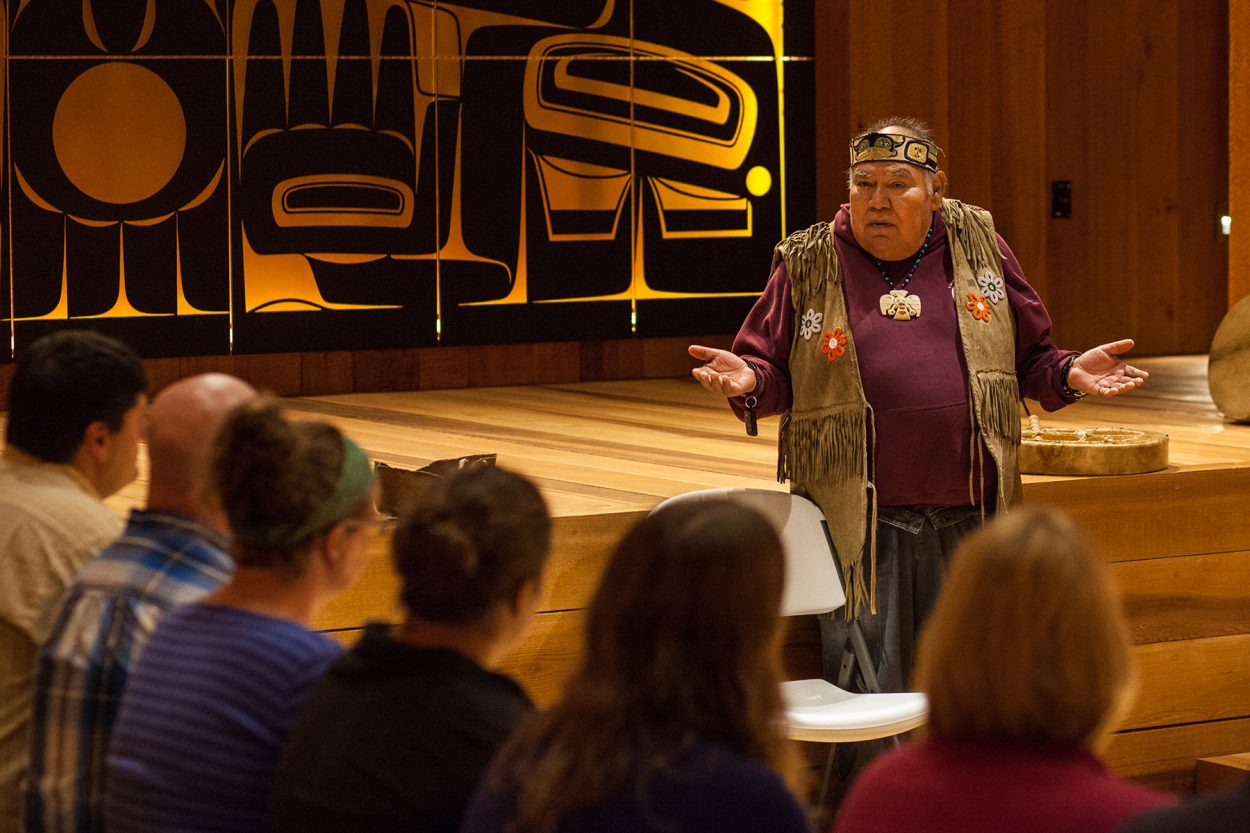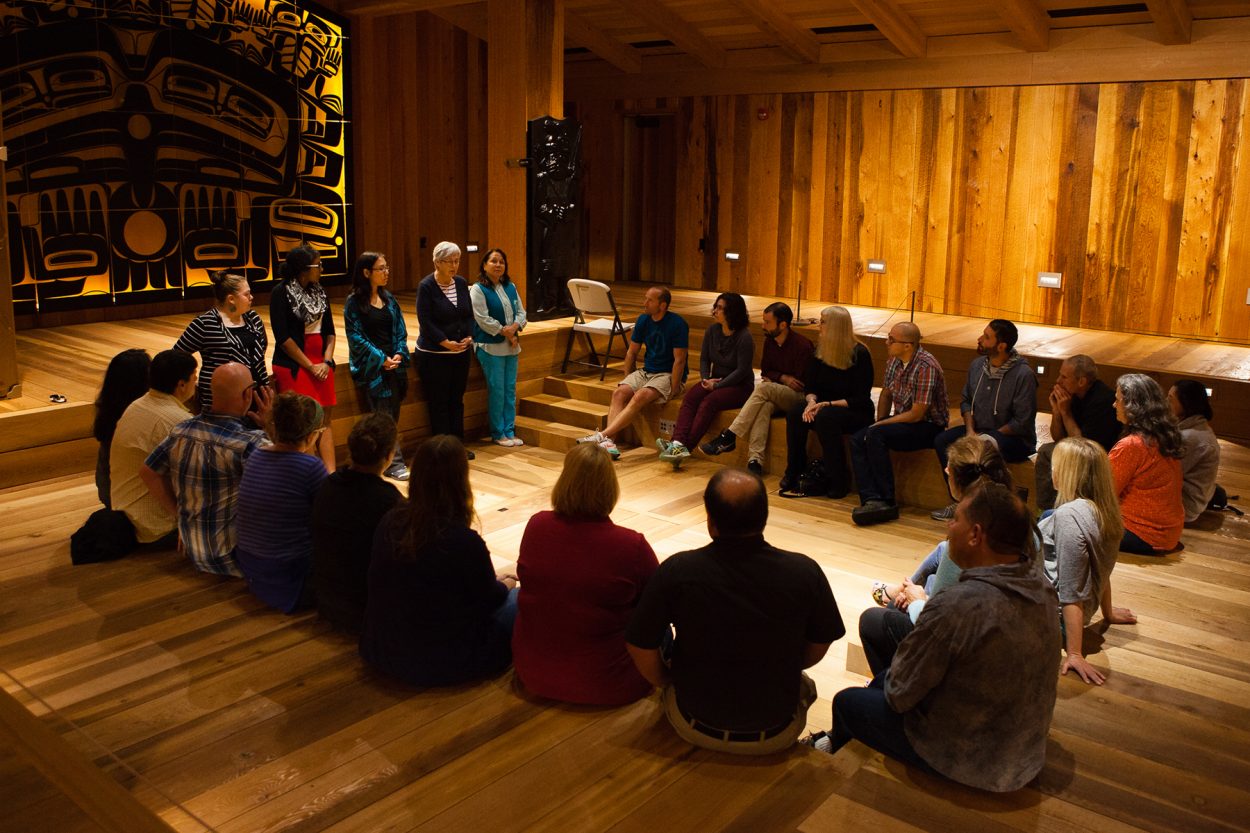
A program that teaches teachers how to incorporate culture into their classrooms has moved into several communities in Southeast Alaska. The program “Thru the Cultural Lens” is run by Sealaska Heritage Institute. It’s been in some of Juneau’s secondary schools for about seven years but this year it’s expanding to five K-12 school districts in smaller communities in the region.
There are hundreds of Indigenous students in public schools in Southeast Alaska. But many of the K-12 teachers are non-native and have no idea how to incorporate the contemporary culture into the classroom. Teachers might be aware of Tlingit, Haida, and Tsimshian cultures but don’t know how to teach it.
“Then they just don’t do it,” said David Sheakley-Early, Project Manager with Sealaska Heritage Institute.
He says he’s seen this happen repeatedly. It’s not that the teachers don’t want to teach students the local Indigenous culture they’re just afraid to.
“With fear of maybe ‘I’ll do it wrong’,” Sheakley-Early said. “Maybe I’ll incorporate it and try to do something and offend somebody.”
He says the Thru the Cultural Lens program gives teachers the confidence talk about culture with their students. Studies show Indigenous students are more successful when they have their own culture in their classroom: things like having cultural responsible education materials, a place-based curriculum, and the incorporation of Native languages.
“Ultimately, the bottom line is everything is for the student,” Sheakley-Early said. “So, it’s really helping to find that connection so that students can really be engaged.”
Sheakley-Early says the program teaches cultural values and that’s something that all students can benefit from.
“Honoring our land; Strength–the body, mind, and spirit; The past, present, and future generations; and then Balance–social balance, spiritual balance, balance in really everything,” said Sheakley-Early. “So, based off of those four values you can see how it is pretty dynamic and it doesn’t have to be specifically for Alaska Native students that are going to benefit understanding and learning through these values.”

The five new school districts taking part in the program are in Petersburg, Wrangell, Ketchikan, Hydaburg and Metlakatla.
In Petersburg, all teachers in the district will get some training says Superintendent, Erica Kludt-Painter.
“Looking at what framework and background that we all bring to instruction and learning,” said Kludt-Painter.
They will also be looking at district policies.
Some staff in the district are diving deeper into the program and getting additional training. Petersburg’s superintendent, two principals, and three teachers are participating in that part. They will be spending 50 hours over several months having cultural orientation and then sharing that knowledge with other school staff.
“So, we have a teacher in each building that’s participating and we’ll be able to do our own training and work with staff moving forward,” Kludt-Painter said.
Participants are learning together in a group with the other Southeast communities. They’ll each get a stipend for completing the program. They can also earn three credits through the University of Alaska Southeast if they want.
Their first course will be a sort of Southeast Alaska Native Culture 101 class, where they will learn from different speakers who Sheakley-Early calls “the cream of the crop”.
“And then the hope is that the teachers and educators take this cultural orientation, this knowledge and this background, this history, these cultural values and incorporate these into the classroom, into the schools, and into the community as well,” he said.
The participants in the course will develop a final project that they teach in their classrooms and also share with the program so that other educators can use it as well.
The program also has a three-day annual education conference at Sealaska Heritage Institute around the first part of August. There, educators from around the state and country learn and talk about culturally responsive education.
The program is funded by the U.S. Department of Education and the Alaska Native Education Program Department.
This grant cycle will go through September of 2022.











